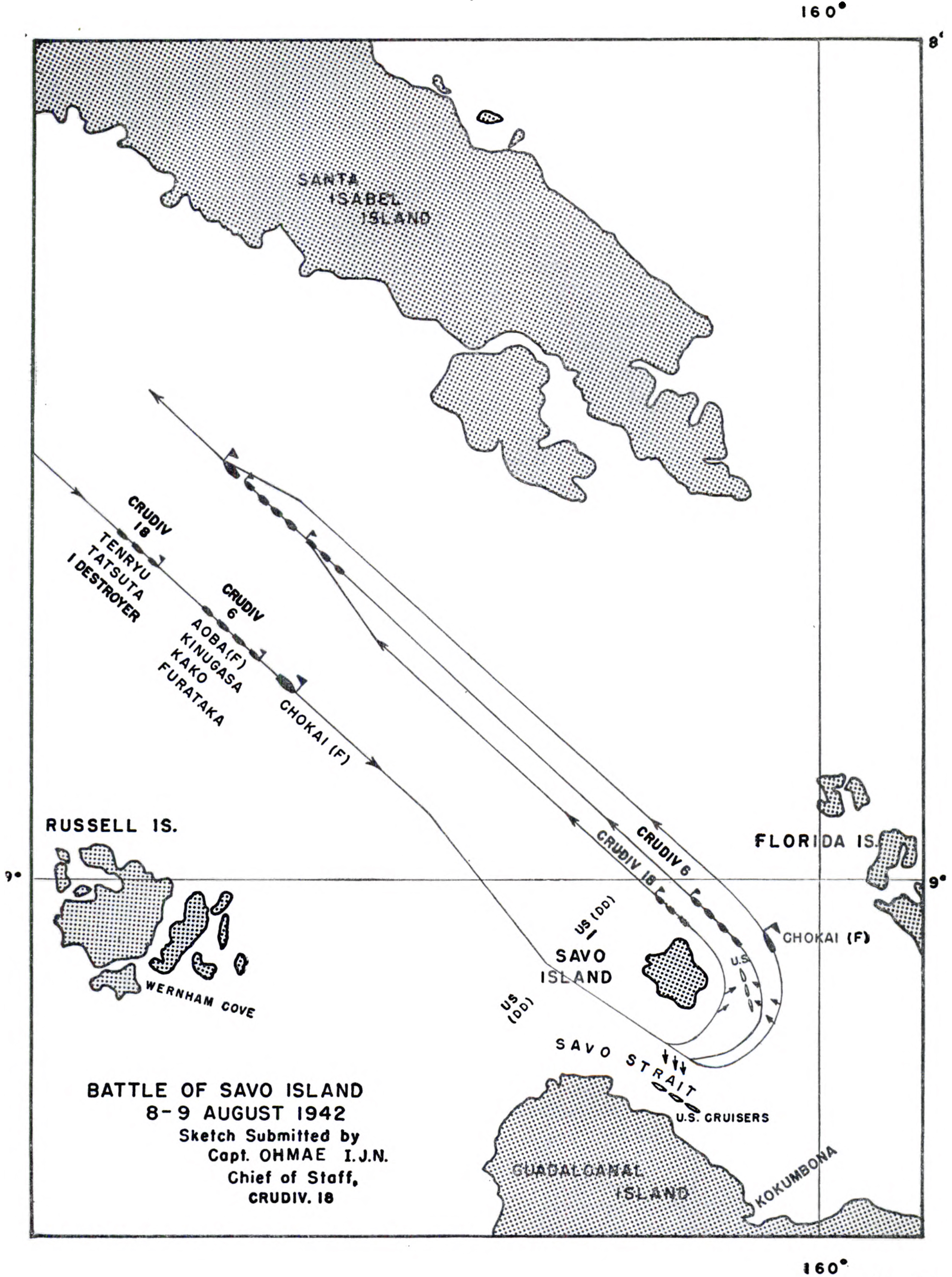THE BATTLE OF SAVO ISLAND: (August 8-9, 1942)
I was reading my World War II history today and was again amazed at the Battle of Savo Island, or as some call it, the 1st Battle of Savo Island (the Japanese called it The First Battle of the Solomon Sea).
It occurred on August 8–9, 1942 and was the first major naval engagement of the Guadalcanal campaign, and the first of several naval battles in the straits later named Ironbottom Sound, that were fought during the very intensive and hard fought six to seven month long Guadalcanal campaign.
The US had just landed on Guadalcanal and other nearby islands to take the uncompleted Japanese airfield that was building there, and which would become, when completed, Henderson Field.
The US and Australia had a strong defensive force present of six heavy cruisers , two light cruisers, and fifteen destroyers. A US carrier group had assisted in the landings, but because of significant losses to its fighter wing in supporting those landings, it had withdrawn late on August 7th, which was unknown at the time to the Japanese.
US Admiral Turner commanded for the US forces, and Japanese Admrial Gunichi Mikawa commanded for the Japanese.
Upon learning of the US landings, Admiral Mikawa gatherd up as strong a force as he could at the time and sailed for Guadalcanal, coming "down the slot," on August 7th and arriving off Guadalcanal in the evening of August 8th. He had five heavy cruisers, two light cruisers and a single destroyer.
What were the results of this major surface action?
Only the worst surface action defeat ever suffered by the US Navy!
Four heavy cruisers were sunk, the HMAS Canberra, the the USS Astoria, the USS Vincennes, and the USS Quincy...two destroyers were also damaged and almost 1,100 American sailors were killed.
USS Quincy, illuminated by Japanese spotlights, burning and sinking
In return the Japanese navy suffered light damage to three heavy cruisers and 58 sailors killed. No Japanese vessels were sunk or badly damaged.
Chart of the line of battle as the Japanese line sailed around Savo Island and in turn took on two US forces
The amazing thing was, that after delivering such a tremendous defeat, because Mikawa thought an American carrier group was in the area and because he felt if he went ahead and made for the anchorage of US transport and supply ships off of Guadalcanal (which were the whole point of his attack), he would not be able to withdraw under darkness and would fall prey to US naval aircraft (which had left the area). So, Admiral Mikawa withdrew immediately after the battles and the opportunity to deliver a potentially fatal blow to the US operation on Guadalcanal was missed.
Had the Japanese destroyed those transports and supply vessels (which would leave late the next day after completing unloading, and many of which would make numerous future runs into Guadalcanal), they may have been able to defeat the Marines on Guadalcanal (which was a very long and hard fought battle in any case) and changed the whole course of the war in the South Pacific.
But it did not happen. On such happenstance do the pages of history turn.


